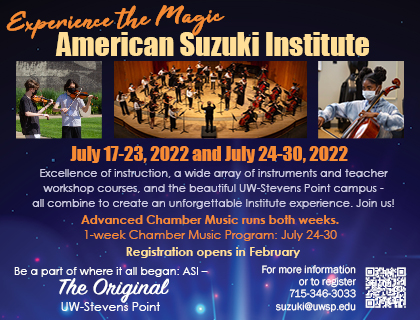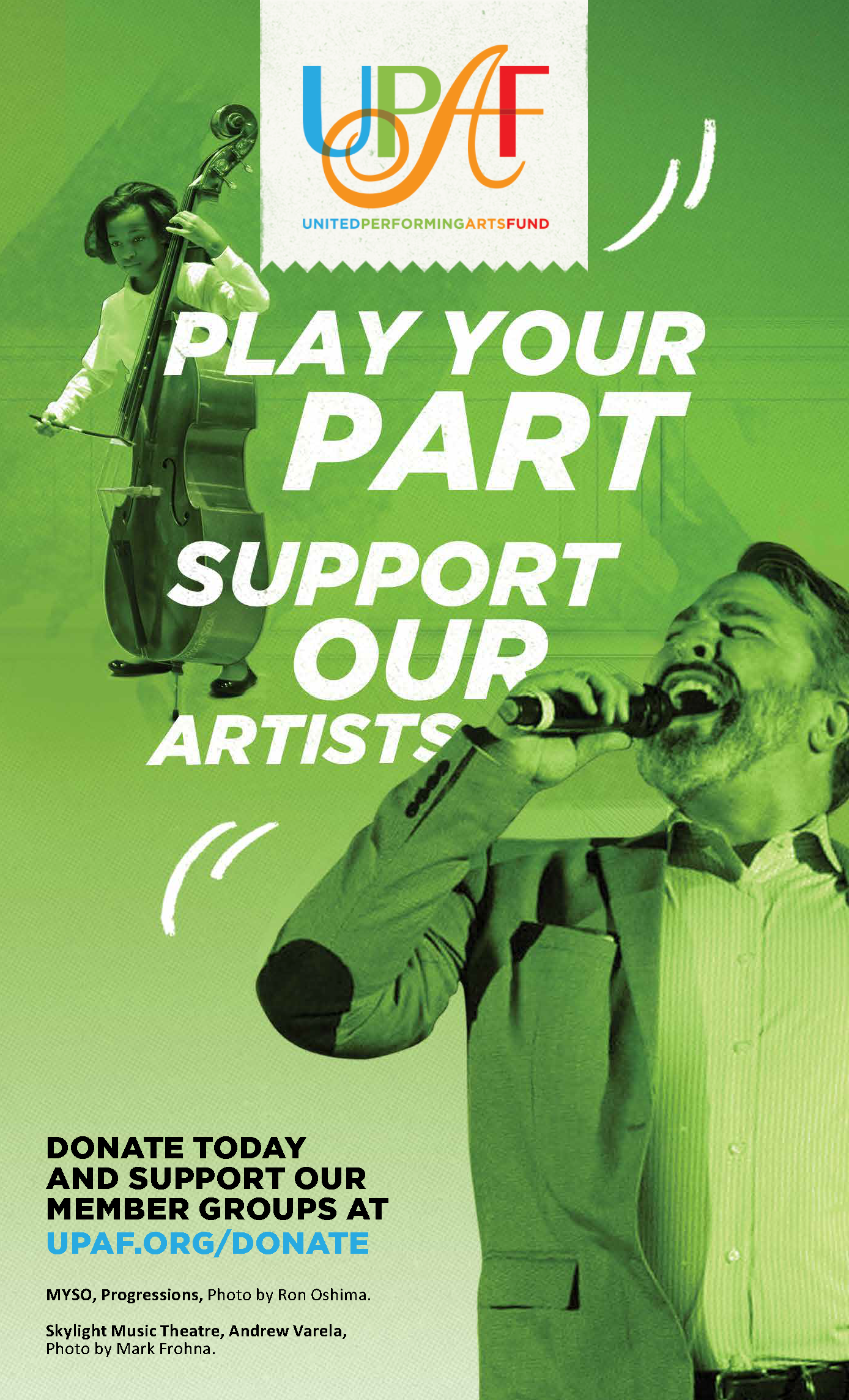John Fitz Rogers (1962-)
Verge (1997)
Florence Price (1887-1953)
Ethiopia's Shadow in America (1932)
Samuel Barber (1910-1981)
Overture to The School for Scandal (1931)
Intermission
Jean Sibelius (1865-1957)
Symphony No. 1, Op. 39 in E minor (1899)
-
- Andante, ma non troppo - Allegro energico
- Andante, ma non troppo lento
- Scherzo: Allegro
- Finale (quasi una fantasia)
FIRST VIOLINS
Cecelia Santiago, Concertmaster*
Clark Snavely, Concertmaster*
Amy Koo, Concertmaster*
Ingrid Buschkopf, Associate Concertmaster
Zak Chen, Associate Concertmaster*
Sofia Castanho-Bollinger, Assistant Concertmaster*
Cecilia Koth*
Isabella Nichols*
Isabella Lozier*
Jasmine Storck*
Ethan Emanuelson
Ethan Chen
Lorena Marrari
Savanna Rostad
Erin Krasovich
Mira Santo Tomas
Benjamin Doerr
Grace Lee
Alice Chen
Molly Anders
SECOND VIOLINS
Aashay Mardikar, Principal*
Max Letellier, Assistant Principal
Jayanth Suthan
Henry Snavely*
Aaron McGarry
Nicolas De Torre
Andrea Hanna
Victoria Velazquez Rojas
Tamara Avdeev
Madeline Bingenheimer
Richard Nickel*
Aubrey Moore
Zindzi Frederick
Trinity Schrotenboer
Ramona Cloud
Ruby Donner
Blessing Kim
Jennifer Hong
Valerie Tuzhilkov
Jenna Johnson
Grace St. Denis
Nathan Lynn
VIOLAS
Owne Xayboury, Principal*
Armarion Julien, Principal*
Sonya Wilhelm
Vivian Cucu*
Elliot Richer
Kyrsten Sulok*
Noe Goldhaber
Benjamin Hruska
Alexandra Kunda
Hayden Stringer
Aiden Toth
Alexandra Streit
David Ibitoye
CELLOS
Luis McDougall, Principal*
Noor Salameh, Principal*
Nolan Boerner, Principal*
Lucy Wu*
William Larsen*
Nathan Hansen
Amber Moreno-Padilla
Shelby Gooden
Isaac Ganger
Jane Consiglia Atkinson
Jesus Avila
BASSES
Oscar Thompson, Principal*
Nathan Foley, Associate Principal
Isabella McGinley
Katya Imas
Benjamin Crnkovich
HARP
Maydine Bellot
FLUTES
Shreya Girish*
Marisa Lehner
Isabel Margerie
Abhinay Reddy
PICCOLO
Marisa Lehner
Abhinay Reddy
OBOES
Blake Curtis*
Sarah Kidd
Haley Street
Malena Weber
Elisabeth Young
ENGLISH HORNS
Blake Curtis
Haley Street
Elisabeth Young
CLARINETS
Anvita Bansal*
Elisabeth Fischer
Autumn Lee*
Sydney Stanford
Kaitlyn Yang
BASS CLARINET
Sydney Stanford
BASSOONS
Andrew Fujimoto
Presley Hansen
Alaina Mueller
HORNS
Eli Hoffmann*
Elliott Loughney
Skylar Lyon
Alexandra Mueller*
Peter Weyers
TRUMPETS
Emmah Bagin*
Sarah Downes
Oscar Endres
Zachary Fitzgerald
Hudson Simmons
TROMBONES
Mitchell Dees
Grace O'Connell
Josie Sagan*
TUBA
Ryan Nelson
PERCUSSION
Logan DeWaide
Daniel Grady*
Reece Pfisterer
Casper Voca
* - Section Leader
by Roger Ruggeri © 2022
John Fitz Rogers
b. 1962
Verge
Originally from Stevens Point, Wisconsin, Fitz Rogers is presently a Professor of Composition at the University of South Carolina School of Music. He holds degrees from Cornell, Yale, and Oberlin, where he studied piano, composition, and conducting. His composition teachers include Steven Stucky, Roberto Sierra, Martin Bresnick, and Jacob Druckman.
Fitz Rogers reveals the following about his creative process:
“I look at composing more like a writer might look at writing: I take anything from my experience or background and try to fuse it into a single, coherent voice…The things I value (that a writer might also share): simplicity and clarity, the unexpected but subtle shift, nuance; the graceful, expressive phase; mystery; just the right proportion and balance. In the end, though, I believe the only thing that’s important in any kind of music is whether it speaks to us emotionally…My music isn’t about assault, I’d like to think its’s about seduction. I think mystery lies in furtive turns, in the nooks and crannies in things that are sometimes distant or ‘once removed.’ I like music that can feel hopeful yet sad, exuberant though slightly crazed. I want my music to feel natural yet pensive or even slightly uneasy. I like music that lingers.”
Verge was written in 1997 on a commission by the Albany Symphony Orchestra; in 2019, the orchestra recorded the work under its Music Director, David Alan Miller.
Launched by a brassy flourish, the subsequent instrumental interplay reveals the jazz elements that Fitz Rogers notably employs. His fondness for metallic percussion instruments emerges as strings soar above driving rhythms. Toward the end, the sounds dwindles to just a few fragments before growing again to an exciting conclusion.
Notes from the composer from the score:
“Verge draws its inspiration from many sources. I wanted to create a kind of tapestry that weaves together several musical ideas from Mussorgsky’s Pictures at an Exhibition. This tapestry both mirrors the many images that inspired Mussorgsky’s work, and “frames” his work by taking motives out of their original context and reworking them using techniques derived from medieval music, West African drumming patterns, pop music rhythms, etc. I was keenly aware of Ravel’s brilliant orchestration of Mussorgsky’s piece, and this in no small part influenced the orchestral fabric of my work. The result, I hope, is not merely pastiche, but a synthesis of ideas and techniques that at once pays homage to Mussorgsky and Ravel and to the many disparate genres of music that are important to me as a composer. The title Verge has to do with the idea of borders between these genres and the blurring of those distinctions.”
Florence Beatrice Price (née Smith)
b. April 9, 1887; Little Rock, Arkansas; d. June 3, 1953; Chicago, Illinois
Ethiopia’s Shadow in America
Celebrated as the first African-American woman to gain recognition as a symphonic composer, Price was also first to have her music performed by a major orchestra. Early training with her mother, a music teacher, led to her first public performance as a pianist at the age of four. She also began to compose in her childhood; an early work found publication when she was only eleven. After sterling achievements in high school, Price went on to study organ and piano teaching at the New England Conservatory of Music. While at that Boston school, she also studied composition and counterpoint with noted American composers George Chadwick and Frederick Converse. By the time she graduated with honors in 1906, she had also written a string trio and a symphony.
Florence began her music teaching career in Atlanta, where she married lawyer Thomas J. Price in 1912. Seeking relief from Jim Crow repression, the couple moved to Chicago in the late-20’s, where Price ultimately became part of the Chicago Black Renaissance. Along with her student and friend, Margaret Bonds, Price gained significant association with writer Langston Hughes and contralto Marian Anderson.
Throughout her more than 300 works, the American Spiritual was rarely far from the surface. Characteristically, in Ethiopia’s Shadow in America, of 1929-32, Go Down Moses and Swing Low, Sweet Chariot are both in evidence without being overtly quoted. Although this concise three-movement work won an honorable mention in the Rodman Wanamaker Music Contest of 1932, the manuscript was lost for a number of years and did not actually enjoy public performance until 2015. The title alludes to Black people in general rather than to any specific African nation.
Of her work, Price comments:
- Introduction and Allegretto: The Arrival of the Negro in America when first brought here as a slave.
- Andante: His Resignation and Faith.
- Allegro: His Adaptation, a fusion of his native and acquired impulses.
Samuel Barber
b. March 9, 1910; West Chester, PA; d. January 23, 1981; New York City
Overture to The School for Scandal, Op. 5
Among the most beloved and traditional of America's contemporary composers, Samuel Barber was relatively untouched by modern concepts of form, timbre, and instrumentation. Particularly in his earlier works, Barber's muse was one of lyric expression. The origins of his flowing concept of composition can be traced back to his childhood and the profound influence of his aunt, the famous Metropolitan Opera contralto, Louise Homer. Frequently visiting his eastern Pennsylvania home, she advised him on the short songs that he wrote for her. As a youth, Barber went with his aunt to recording sessions, where he was exposed to the vocal art of such legendary singers as Caruso and Galli-Curci.
In addition to the beneficial influence of his aunt, Barber had the advantage of thorough musical training. He began studying music at the age of six; within a year, he was writing small works. When he was only twelve, the precocious lad was already filling a post as organist. A year later he entered the Curtis Institute of Music in Philadelphia and studied there for ten years. Upon graduation, in 1932, Barber composed his sprightly Overture to “The School for Scandal.” Belying its early opus listing, the overture was the recipient of the Bearns Prize and was introduced by the Philadelphia Orchestra at Robin Hood Dell on August 30, 1933.
The School for Scandal was a comedy written by the English dramatist and politician, Richard Brinsley Sheridan (1751-1816). Produced in London in 1777, the play made its first appearance in New York on December 16, 1785. George Washington is thought to have been in attendance at that first New York performance of the comedy that later became known as his favorite play.
Unconcerned with the capture of any particular incident or character in the play, Barber sought rather to portray the mirth and gaiety that fills the production. He called his overture “a musical reflection of the play’s spirit.” A vigorous opening passage for full orchestra prefaces a charming melody in the first violins. After some elaboration of this sprightly idea, the oboe and clarinet present their melodic contributions and the overture bustles to its energetic close.
Jean Sibelius
b. December 8, 1865; Tavastehus; September 20, 1957; Jarvenpaa
Symphony No. 1 in E minor, Opus 39
Among the truly original symphonists of the modern era, Sibelius absorbed the traditions of the 19th-century, infused them with his personal art and produced a series of works that resonate with the craggy splendor of Finland. The thirty-four year old Sibelius was an experienced composer when he set his pen to the Symphony No. 1 in 1899. His Kullervo Symphony, Op. 7, was already seven years old; En Saga, the Karelia music and the Four Legends from the Kalevala all paved the way for this first venture into the realm of the abstract symphony. Although the composer's admiration for the techniques of Borodin and Tchaikovsky can occasionally be recognized, this work—introduced under the composer's baton in Helsinki, on April 26, 1899—is a powerfully sweeping personal statement of tremendous intensity.
After nearly a century, this symphony and, for that matter, its composer, have been visited by both accolades and brickbats. Long a part of the standard repertoire, the work ideally generates the excitement felt by its early audiences. A sense of this emotion was conveyed by Olin Downes, who (after a 1912 Boston Symphony Orchestra concert under Karl Muck) was moved to write: “..it is difficult to avoid superlatives... The man happens to be a Finn, but he is a patriot for all the world. He lives in the North. So do others, but they have not caught its accents primeval. Others have diverse matters of which to speak. Sibelius is only himself, and his birthright. Few, indeed, can boast so grand a heritage, such a wealth of melody, mastery of material, originality of style.
“There are those who will be offended by the uncompromising strength, the brutal directness, lack of courtesy, in this music. It is certain that Sibelius did not think of a rondo or minuet when he wrote the two last movements of the First Symphony, music as wild and fantastical as music could well be. The orchestra rages or exults savagely. Far indeed from evening dress and Symphony Hall.
“This symphony flies by as though it were composed in one breath. Movement succeeds movement, as it were, in one breathless haste. There is so much to be said, there is such necessity for saying it; for the composer is in deadly earnest. Then there is the exceeding freshness and pungency of coloring. Think of the moment when the second theme of the first movement appears, a gleam of light in the gloom....The means are orthodox, the result unbelievably elemental....There are the sudden bursts of that intense brilliance which is surely one of the characteristics of northern landscapes....Consider the slow movement, and its dramatic climax; the barbaric scherzo; the mad vigor of the finale, with its alternating theme, lovely and simple, a little orthodox in its curve, wholly unorthodox in its unfolding and its remarkable orchestral coloring. The last movement is, of the four, probably the finest, irresistible in its sweep and power, grandly tragic, the climax of all that has gone before.”
I. Andante ma non troppo; Allegro energico, E minor, 2/2; 6/4. Over a hushed timpani roll, the clarinet plays a doleful introductory theme (which only reappears in the finale). Under the clarinet’s last note, the tempo suddenly moves ahead with the violins presenting a motivic first theme that is then taken up by violas and cellos. Plunging ahead, the movement soon arrives at its second subject, stated by a pair of flutes. Over string syncopations, the woodwinds intone a more reflective version of the first theme.
A forceful development section brings to mind the words of Robert Bagar, who finds in this music “…wild, barbaric shouts, outbursts of tremendous passion, raging unbridled utterances that hurl themselves forward like the roar of giant winds.” From out of the developmental tumult comes a powerful restatement of the main theme. There is a return to a point of relative calm and then a long crescendo. Reaching its ultimate climax, the orchestra plunges into its depths as the final measure approaches.
II. Andante, ma non troppo lento, E-flat major, 2/2. In this slow movement, commentator Paul Rosenfeld perceives “…the pathos of brief, bland summers, of light that falls for a moment, gentle and mellow, and then dies away.” A melancholy theme is heard in the violins and cellos. Bassoons begin a passage that ascends slowly through woodwinds, then climaxes on the rhythmic motive that begins the main theme. A poignant cello solo leads to a lyric phrase for horn. There is passionate development of the main theme before the movement fades away.
III. Allegro, C major, 4/4. Pizzicato chords in the lower strings establish this scherzo’s motion before timpani and violins rap out its main motive. Craggy humor continues as the woodwinds begin contrapuntal play around the motivic theme. A trio section provides gentle contrast before an altered version of the first section returns.
IV. Finale (Quasi una fantasia), Andante, E minor, 2/2. Strings make a stentorian restatement of the clarinet theme that introduced this symphony’s first movement. Gradually, the tempo accelerates to the main body of the movement (Allegro molto). Woodwinds present the terse main theme of this section before strings begin tossing it back and forth. The tempo slows as violins play an expressive second theme on their lowest string. There is a reminiscence of the second movement before a forceful brass chord launches a fugato on the main subject of the finale. The tempo relaxes once more as the clarinet recalls the second theme. Strings then take up this theme and lead to way to an impressive closing.
Donations to MYSO are the crucial funding source that allow us to nurture, challenge, and inspire young minds, profoundly changing lives and our community for the better. We are tremendously grateful for these gifts.
This list recognizes gifts of $250 or more that were received from July 1, 2021 – January 11, 2022. Our apologies for any omissions or errors. We encourage you to call Emma Kunz, Philanthropy Operations Manager, at 414-267-2943 with questions or corrections—or to learn how to make a much-appreciated gift to MYSO.




.JPG)


